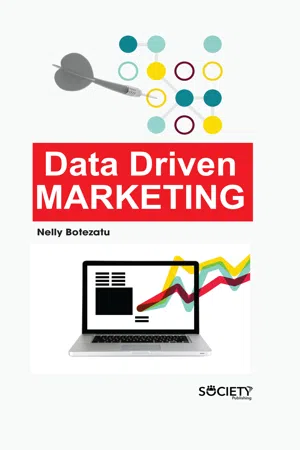Marketing
Customer Driven Marketing Strategy
Customer-driven marketing strategy focuses on identifying and meeting the specific needs and preferences of customers. It involves gathering data and insights to understand customer behavior and using this information to tailor products, services, and marketing efforts. By prioritizing customer satisfaction and engagement, businesses can build stronger relationships and drive long-term success.
Written by Perlego with AI-assistance
Related key terms
1 of 5
5 Key excerpts on "Customer Driven Marketing Strategy"
- eBook - ePub
Environment and Innovation
Strategies to Promote Growth and Sustainability
- Clara Inés Pardo Martínez, Alexander Cotte Poveda(Authors)
- 2021(Publication Date)
- CRC Press(Publisher)
The cost of winning a new customer is much higher than the cost of retaining one. A satisfied consumer is one who is willing to repeat the purchase, recommend the brand, increase their expenditure or the frequency of the purchase, or even collaborate with the brand by offering their opinion to improve the product or service. In this sense, the main focus of a relationship-marketing plan is loyalty, identifying who the most profitable customers are in order to keep them, and then increasing revenues through the different actions that can be carried out. Customer data provides the information that allows the company to build maximum relevance with the consumer, enabling appropriate communication in terms of the message, context, form, and location. Data-driven marketing is based on data to define the strategy and is intrinsically related to CRM for the numerous reasons commented above. Thanks to the deep knowledge of the consumer and their needs, we can both improve the relevance of the brands through the content within the loyalty program, as well as align better to the business objectives. Through the data and records that it leaves, we are able to design brand strategies that align business objectives with the client’s needs.It is necessary to highlight that although a company undertakes a CRM strategy, this does not guarantee that immediately or even in the long term you will start to obtain higher revenues from your customers. For this to happen, CRM requires being part of the organizational culture and the acceptance of the clients involved in the process. - eBook - PDF
Marketing for the Nonmarketing Executive
An Integrated Resource Management Guide for the 21st Century
- Norton Paley(Author)
- 2000(Publication Date)
- CRC Press(Publisher)
1 119 Customer Relationship Management: Integrating Customer-Driven Marketing with the Internet Age INTRODUCTION Technology, specifically the Internet, is sparking a transformation in business that is every bit as profound as the Industrial Revolution. The movement resounds espe-cially among those forward-thinking executives in market-sensitive organizations who commit themselves to total customer satisfaction. That resolve, along with the application of technology, matches perfectly with the traditional definition of mar-keting as a total system of interacting forces designed to plan, price, promote, and dis-tribute want-satisfying products and services in a competitive environment at a profit . To bring the movement to a real-life setting, act as if you are sitting in on a strat-egy meeting in the following case example. Key point: Manufacturing is changing from the “push” model to a “pull” model, where customers decide what they want built. CASE EXAMPLE: FORD MOTOR CO. At a Ford Motor Co. strategy meeting the agenda focused on how the company was organized, the problems of costly 80-day inventories sitting on dealer lots, and a 64-day average time from customer order to delivery. Also, there was animated discus-sion on the growing problem of some disgruntled suppliers complaining about having to manufacture and inventory parts based on last-minute changes in orders resulting from Ford’s ever-changing sales forecasts. There was a spirited debate among some individuals at the meeting about the viability of the century-old “push” business model, where the plant builds a predetermined mix of cars and ships them to dealers who rely on aggressive sales tactics or hefty rebates to move cars off the lot. 6 F ORD ’ S S TRATEGIES Recognizing the depth of those concerns, after a mature discussion Ford management decided to resolutely move forward and create a vision of what a 21st-century mar-keting-driven company would look like. - eBook - PDF
- William Pride, O. C. Ferrell(Authors)
- 2019(Publication Date)
- Cengage Learning EMEA(Publisher)
Editorial review has deemed that any suppressed content does not materially affect the overall learning experience. Cengage Learning reserves the right to remove additional content at any time if subsequent rights restrictions require it. CHAPTER 1: An Overview of Strategic Marketing 17 maintenance. Without an adequate information system, however, an organization cannot be market oriented. To satisfy customers’ objectives as well as its own, a company also must coordinate all of its activities. This may require restructuring its internal operations, including production, marketing, and other business functions. This requires the firm to adapt to a changing external environment, including changing customer expectations. Companies that monitor the external environment can often predict major changes and adapt successfully. Elon Musk has been a leader in supporting the research and development for driverless cars. Consumers increasingly do not wish to drive and use ride-sharing services. The development of Artificial Intelligence at Tesla, they believe, will result in a global businesses advantage at a lower cost than the competition. 30 If marketing is not included in the organization’s top-level management, a company could fail to address actual, and evolving, customer needs and desires. Implementing the marketing concept demands the support not only of top management but also of managers and staff at all levels of the organization. 1-6 CUSTOMER RELATIONSHIP MANAGEMENT Customer relationship management (CRM) focuses on using information about customers to create marketing strategies that develop and sustain desirable customer relationships. Achieving the full profit potential of each customer relationship should be the fundamental goal of every marketing strategy. Marketing relationships with customers are the lifeblood of all businesses. - eBook - PDF
- Nelly Botezatu(Author)
- 2019(Publication Date)
- Society Publishing(Publisher)
Marketing should never be a one-direction communication. Marketing is not just about telling people about a product and its features, implying that the interaction stops as soon as a product is sold. On the contrary, as soon as the company managed to grab a customer’s attention, it should apply all the available and relevant tools to find out the most possible information about that customer. Communicating with customers can bring companies lots of insights on how to improve their products, what new products it can launch to satisfy new needs, and learn what is right and what needs to be improved in its activity and products. Moreover, paying attention to customers’ needs will let the company understand, if it can actually satisfy all of these needs, and, if not, understand whether it is rational strategy- and financial-wise to make corresponding changes towards customers’ need satisfaction, or not. Data Driven Marketing 10 Last, but not least, understanding all the above-mentioned aspects will help the company to not just grab but also retain customers’ attention, becoming a long-term valuable asset for the company. One of the main marketing principles consists in a thorough research of what are the market needs that should be satisfied, what is the situation on the market, demand structure and trends. Marketers should have a deep knowledge of the current and forecasted demand, competitors’ activities on the market, consumer behavior and their sentiment for the company’s and competitors’ products. Oftentimes, consumers might not even know exactly what they actually want, but they want a solution that would satisfy their needs. For that reason, one of the main tasks of marketing is to understand consumers needs and desires. However, marketers should also take into consideration the estimated price of the future product, as customers desires and needs might not always be affordable for them. - eBook - PDF
- Louis E. Boone, David L. Kurtz, Michael H. Khan, Brahm Canzer(Authors)
- 2016(Publication Date)
- Wiley(Publisher)
301 Chapter 11 Customer‐Driven Marketing SOLVING AN ETHICAL CONTROVERSY (continued) are ice skates, tomato sauce, and a haircut. Business products—or business‐to‐business (B2B) products—are goods and services purchased to be used, either directly or indirectly, in making other goods that will be resold. Some products can fit either classification depending on who buys them and why. For example, a computer and a credit card can be used by both a business and a consumer. A target market is the group of possible customers that an organization directs its marketing efforts toward. Customer needs and wants differ, and no single organization can satisfy everyone. For example, Popular Science is a magazine geared toward readers who are interested in science and technology, whereas Bon Appétit is aimed at readers who are interested in fine food and cooking. Decisions about marketing involve strategies for four areas of marketing activity: product, distribution, promotion, and pricing. A firm’s marketing mix blends the four strategies to fit the needs and preferences of a specific target market. Marketing success depends not on the four indi- vidual strategies but on their unique combination. Product strategy involves more than just designing a good or service by adding needed quali- ties. It also includes decisions about package design, brand names, trademarks, warranties, prod- uct image, new‐product development, and customer service. Think about your favourite pair of jeans. Do you like them because they fit the best, or do other qualities—such as styling and overall image—play a role in your brand preference? Distribution strategy, the second marketing mix vari- able, ensures that customers receive their purchases in the proper quantities at the right times and locations.
Index pages curate the most relevant extracts from our library of academic textbooks. They’ve been created using an in-house natural language model (NLM), each adding context and meaning to key research topics.




